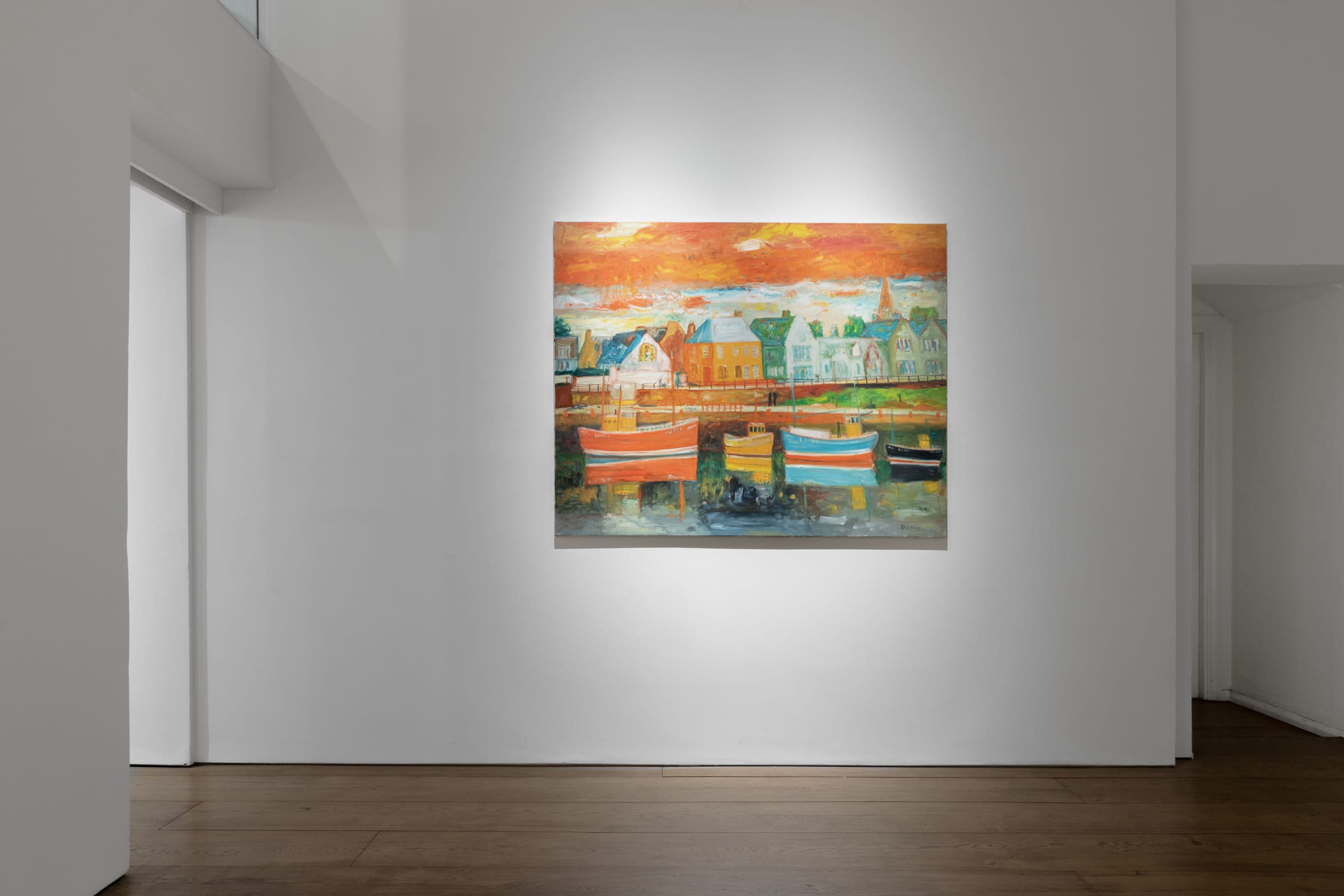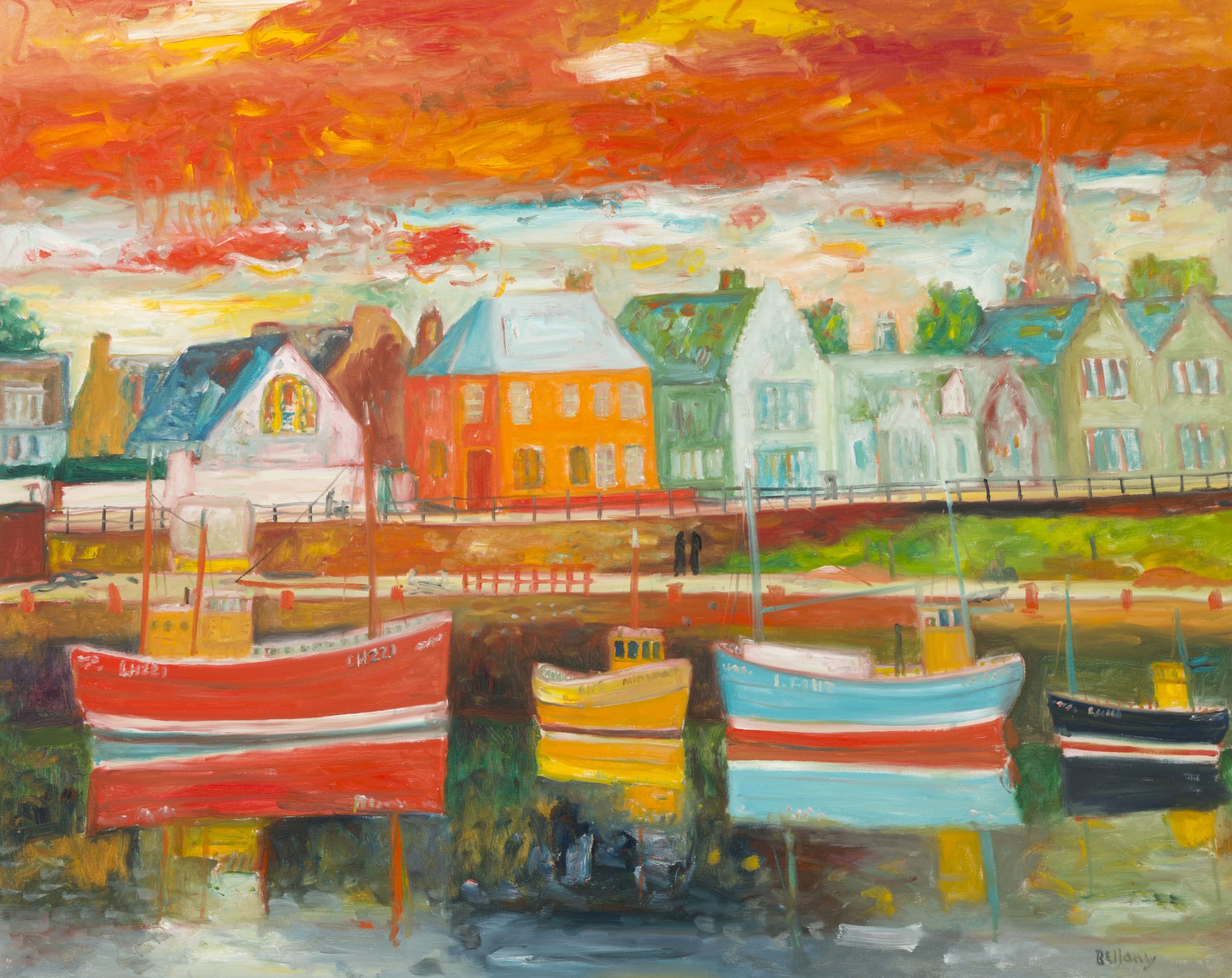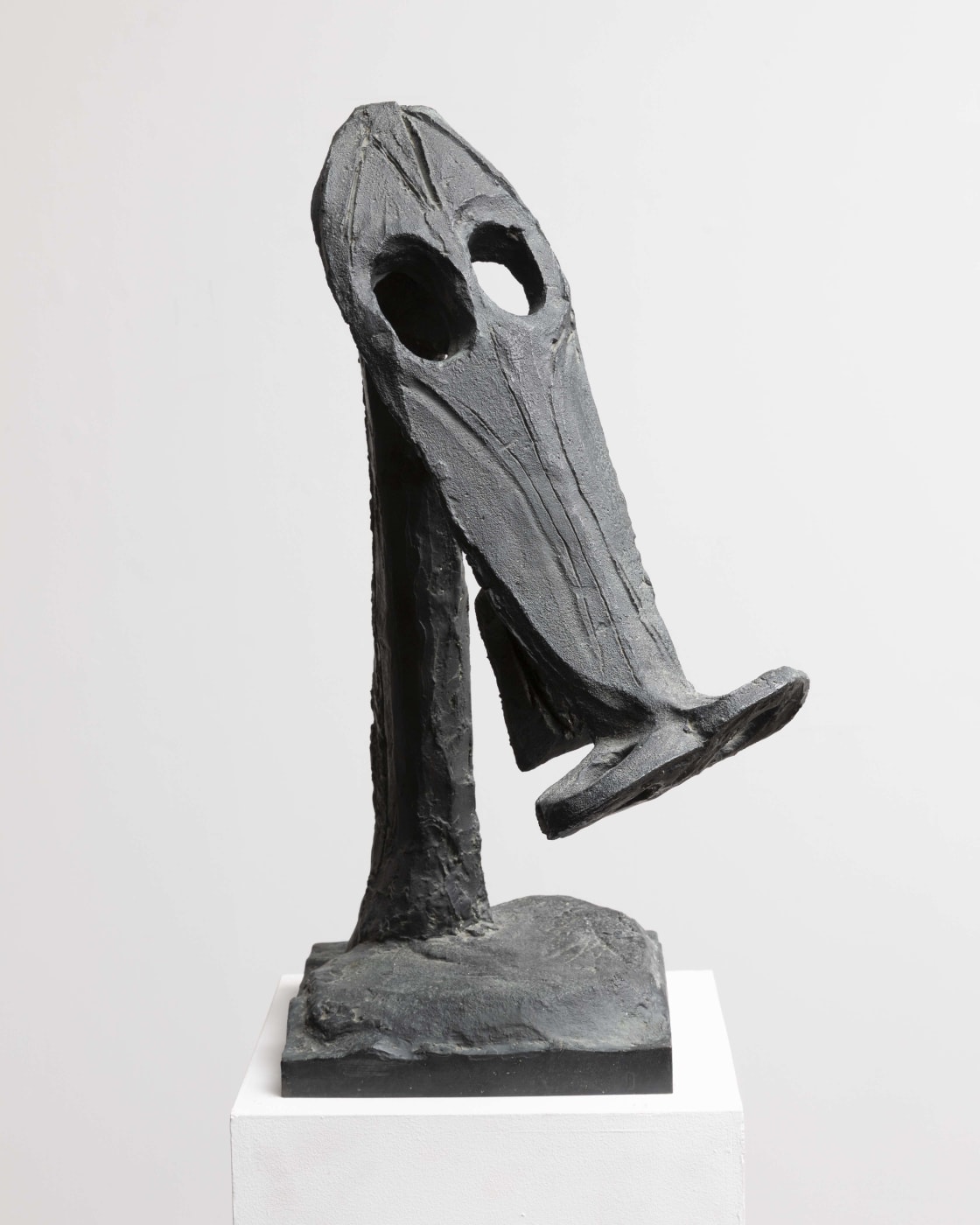
Lower Gallery Spotlight
John Bellany & Eduardo Paolozzi
Overview
This month the Lower Gallery at our Cork Street space includes highlights from renowned Scottish artists John Bellany, RA CBE (1942-2013) and Eduardo Paolozzi, RA CBE (1924-2005), both of whom are represented in current exhibitions at the City Art Centre, Edinburgh.
John Bellany: Port Seton

Born in Port Seton, on the coast of East Lothian near Edinburgh, John Bellany's family were fishermen and boat builders within a close-knit, strict Protestant community with seafaring heritage. Bellany drew boats from a young age, depicting what he described as 'the hustle and bustle of activity, that was the core of my life.’ His connection to the sea, his family, and his roots infused his practice with rich personal symbolism, with the harbour itself a subject revisited frequently throughout his career, including in his complex pictorial narratives. His images of Port Seton are at once intimate and mythic, tethered to the community that shaped him, with the harbour not just a setting but a vessel of memory, mortality, and pelagic lore.
John Bellany (1942-2013) was a pioneering figure in modern Scottish painting. Deeply influenced by his maritime heritage, Bellany’s work blends personal symbolism with religious and nautical imagery, often exploring themes of mortality, identity, and resilience. A graduate of Edinburgh College of Art and the Royal College of Art in London, Bellany broke from traditional Scottish landscape painting, developing a bold, expressive practice in which he often depicted himself and his family as different characters. Bellany was made a Royal Academician in 1991 and was appointed a CBE in 1994. A prolific painter, his works are held in many major public collections including Tate, National Galleries of Scotland, the Metropolitan Museum of Art, and the Museum of Modern Art, New York.
John Bellany: A Life in Self-Portraiture runs 31 May - 28 September 2025 at the City Art Cente, Edinburgh, bringing together over 80 autobiographical drawings, paintings, prints and sketchbooks, spanning from the early 1960s until the artist’s death in 2013.
Eduardo Paolozzi: Sea Horse (Horse's Head), 1946

Sir Eduardo Paolozzi RA (1924-2005) was born of Italian parents in Leith, studying at Edinburgh College of Art (1943-44), St Martin's School of Art (1944-45), and the Slade School of Fine Art (1945-47). Paolozzi was one of Britain's leading artists from the 1940s up until this death. Following ground-breaking exhibitions at the ICA in the 1950s with the Independent Group, such as Growth and Form (1951); Parallel of Art and Life (1953); and This is Tomorrow (1956); he is acknowledged as one of the creators of British Pop Art, repeatedly experimenting with metamorphosing the human figure, blending geometry with nature. Having witnessed huge technological changes during his lifetime, Paolozzi’s work examines the interface between art and science, man and machine. He conveyed a humorous but poignant message of a technological world in which people run the risk of becoming extinct, rendering man as a graphic avatar, human flesh supplanted by machinery. His work is in global institutional collections with notable public works in London including murals at Tottenham Court Road underground station, the Piscator sculpture outside Euston station and Newton, after William Blake in the piazza of the British Library.
Eduardo Paolozzi's work is featured in the Edinburgh City Art Centre survey exhibition Out of Chaos: Post-War Scottish Art 1945-2000, which showcases evolving approaches to figurative and landscape subjects, the growth of abstraction and pop art, and the development of new media. The exhibition runs 17 May - 12 October 2025.
For further information please enquire below
Enquire




